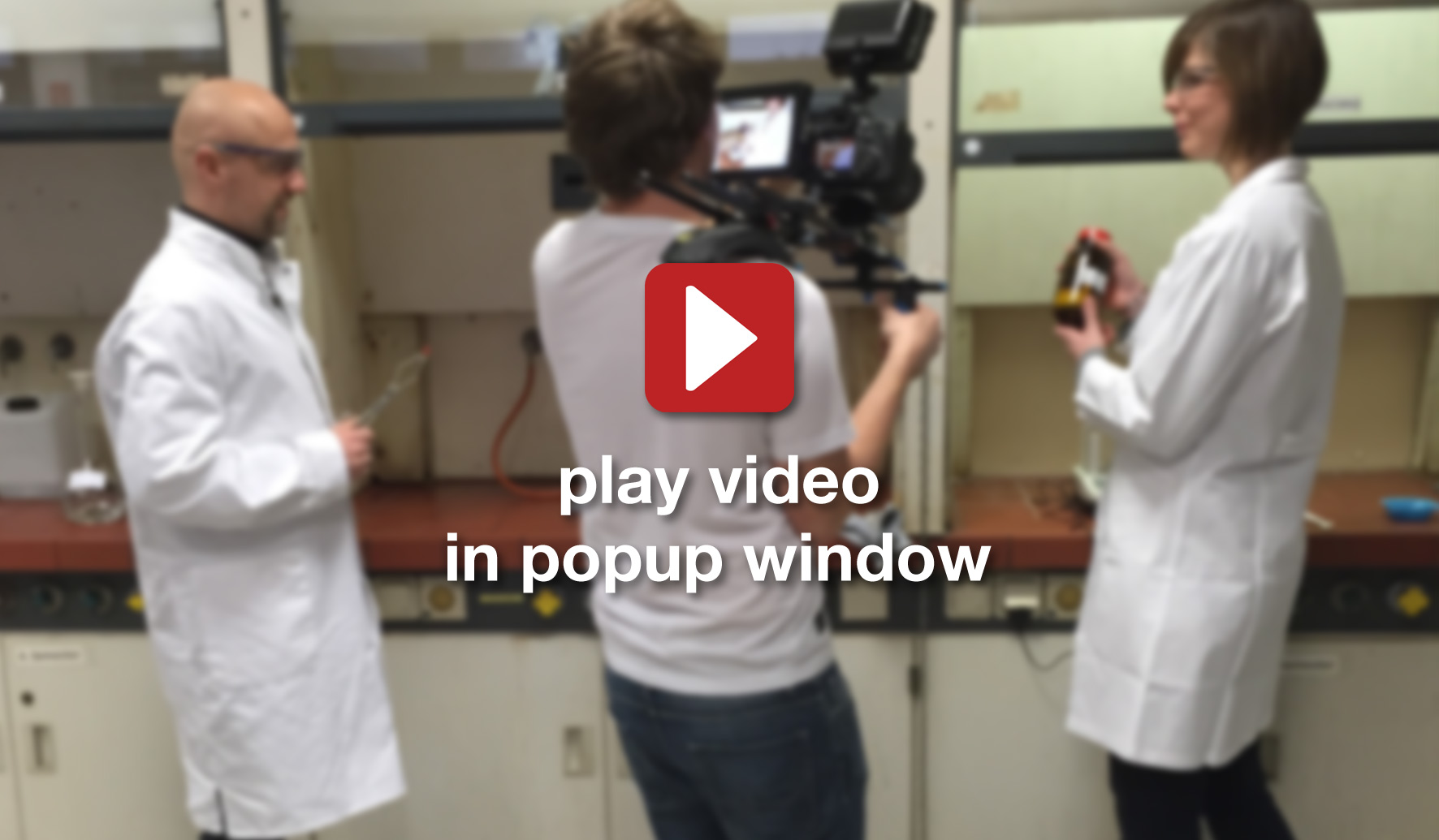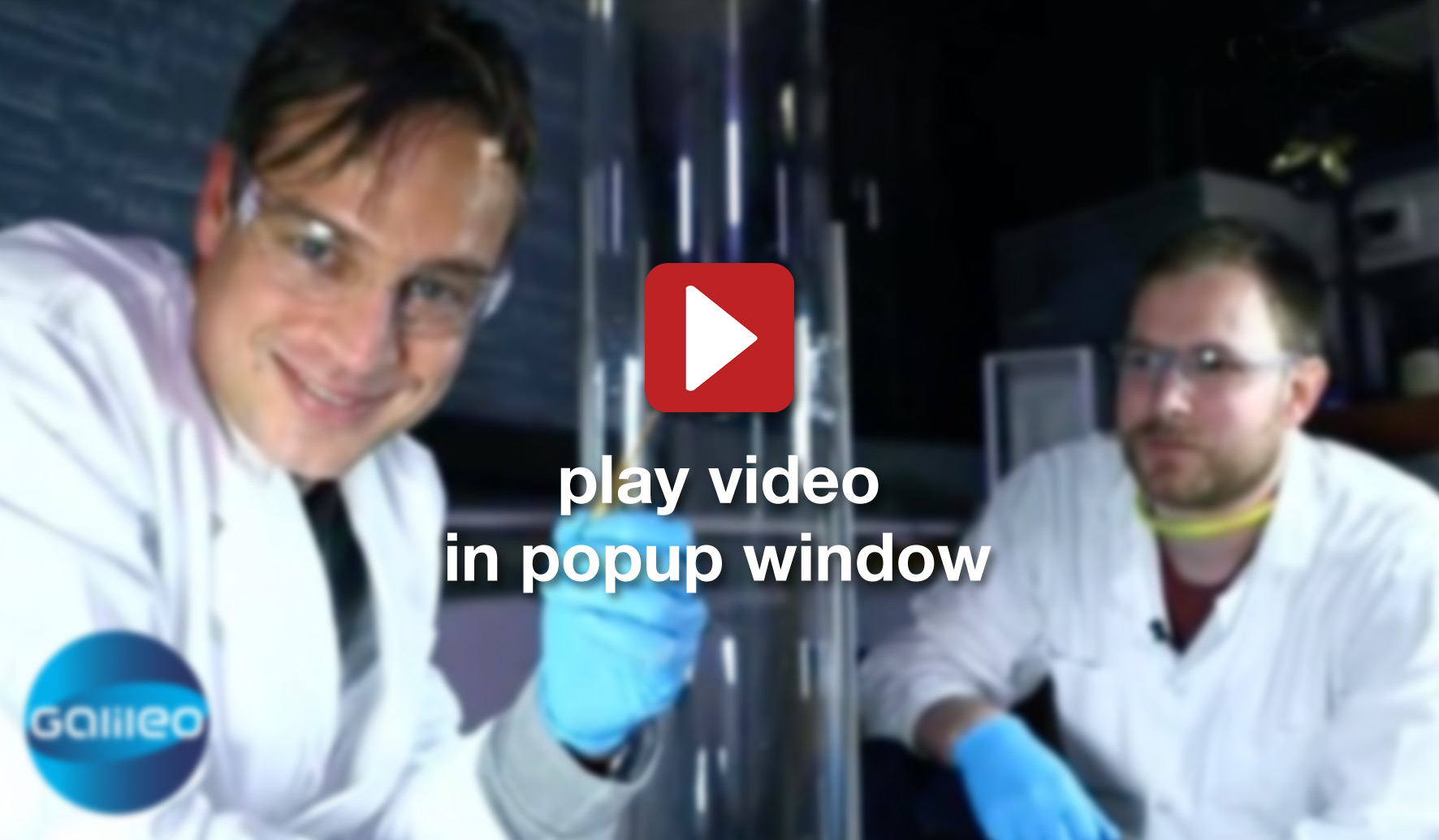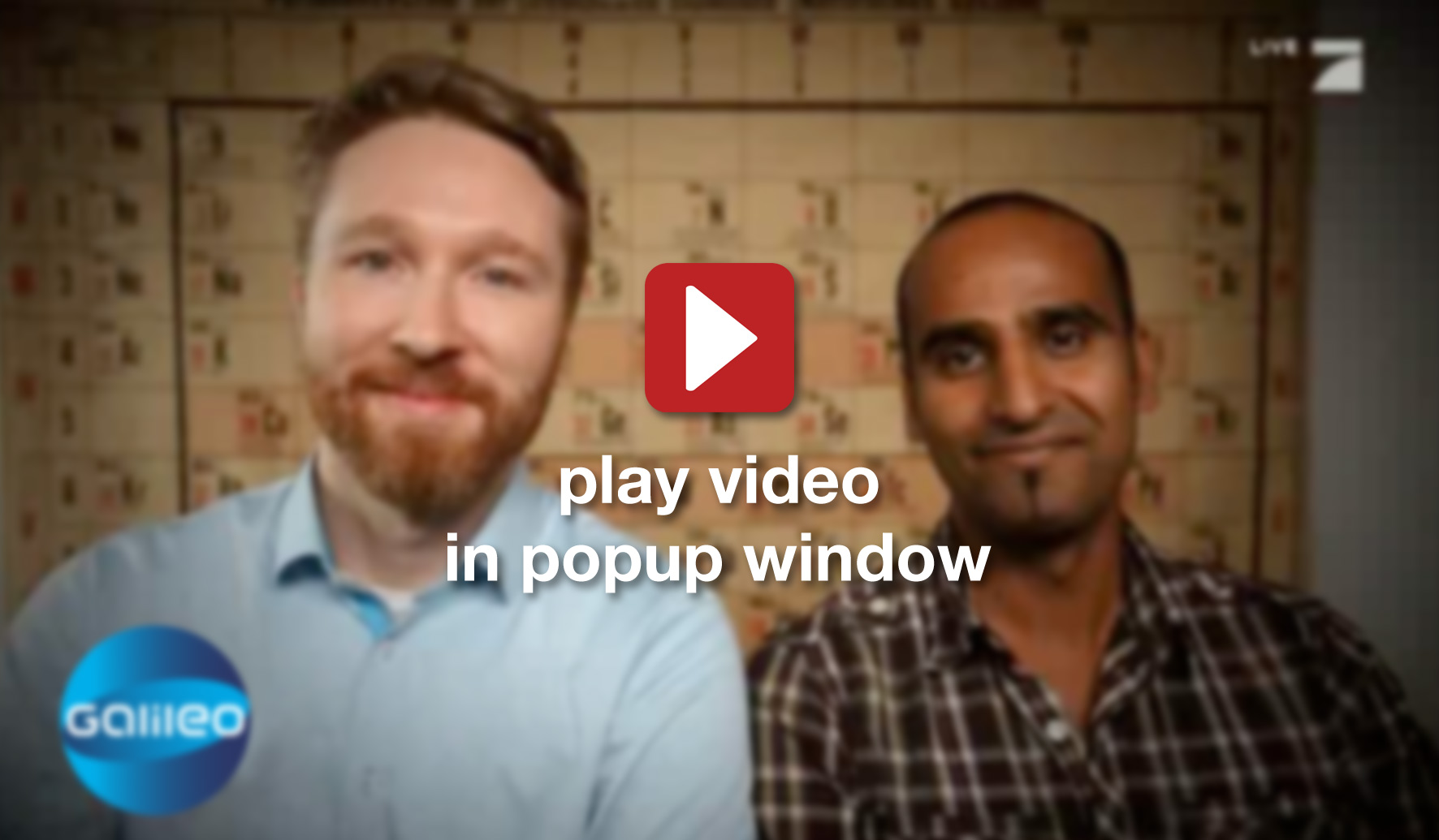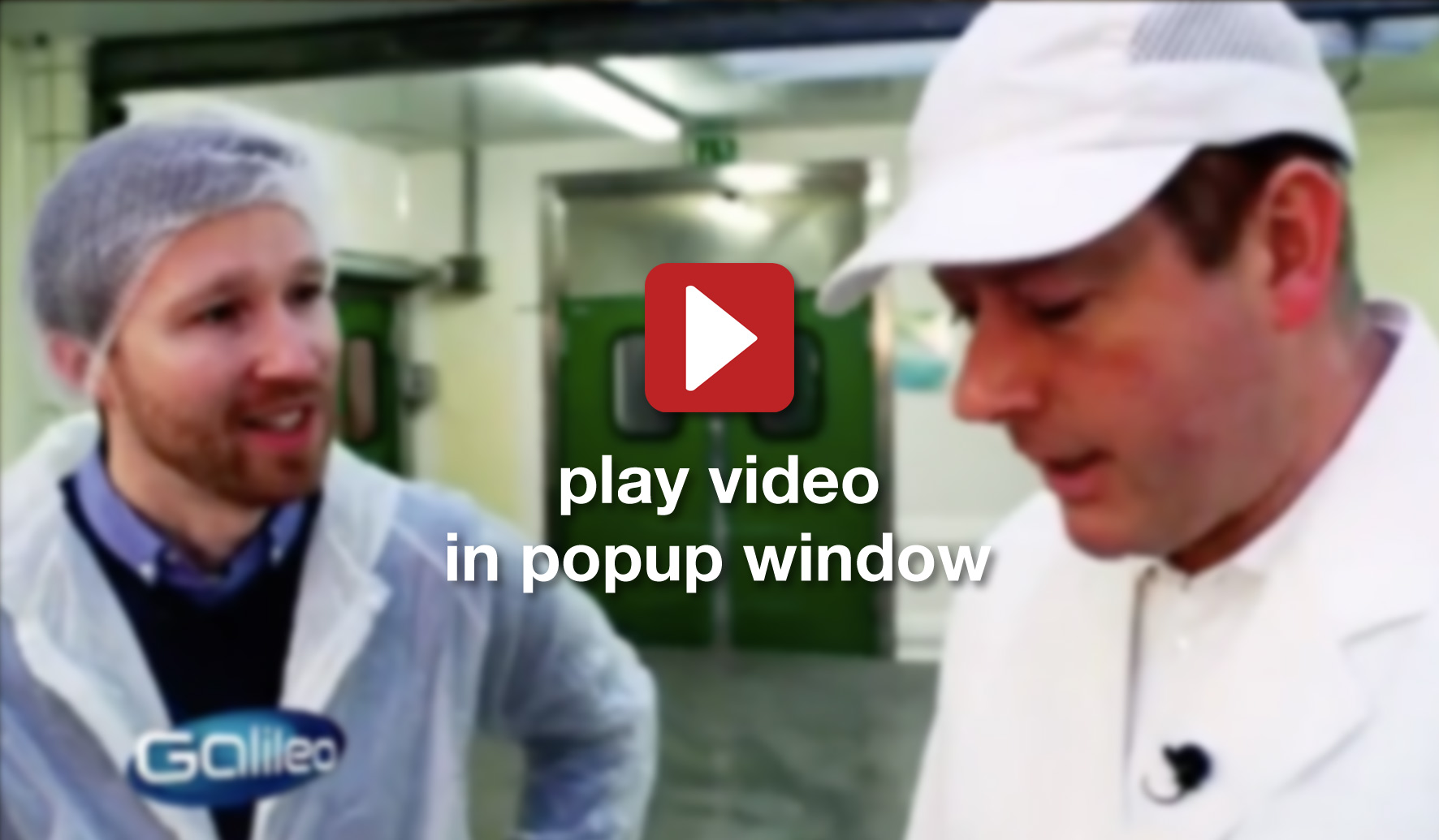We know, it’s not “state of the art” science, and sometimes things get a bit oversimplified for TV… But look closely and there is a lot to learn! We think it’s a great way to reach the public and spread our fascination of science and education. And one thing is sure, it’s really a lot of fun! Enjoy :)
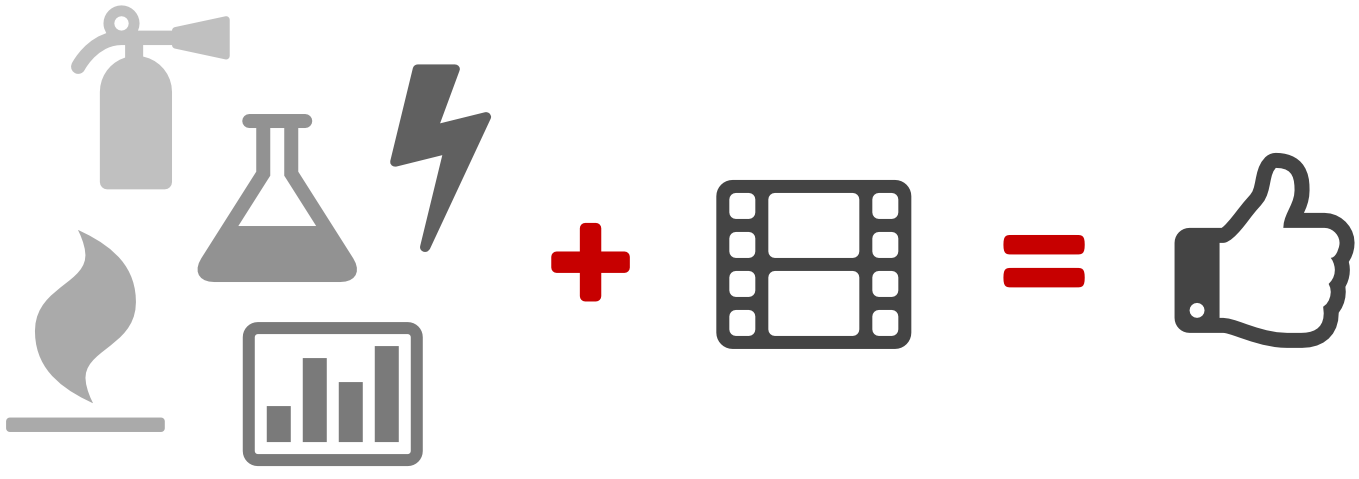
Whats really in ice cream? Are all ingredients natural? Lydia (PhD student in our lab) demonstrates how some manufactures of ice cream play small tricks on us by imitating natural ingredients. Take a close look at the list of ingredients the next time when you buy for example vanilla ice cream (the actual video part with lydia starts approx. at 1/3 into the clip)
(broadcast date: July 2016, german edutainment TV show for Kids: Pur+, ZDF)
(direct link: http://www.tivi.de/mediathek/pur-893542/eis-2784250/)
Can you light a gummy bear without a fire? Ira (PhD student in our lab) demonstrates that a melted potassium chlorate solution can vigorously react with the organic molecules inside of these sweet litte bears. Similar to a Bengal fire, the reaction is surprisingly powerful and produces a bright red light (the actual experiment starts at 12:10 min)
(broadcast date: Feb 2015, a production of Maximusfilm for the german edutainment TV show Galileo, Pro 7)
(direct link: http://www.galileo.tv/videos/koennen-gummibaerchen-brennen/)
Can you start a fire with a drop of water? Denise (PhD student in our lab) shows in an exciting experiment that water can initiate a highly exothermic reaction that ignites a mixture of ammonium nitrate and zinc (the actual experiment starts at 11:15 min)
(broadcast date: Dec 2013, a production of Maximusfilm for the german edutainment TV show Galileo, Pro 7)
(direct link: http://youtu.be/kj772dw7fRg)
Some backstage pictures: Flickr pictures
Is there a substance that explodes just by the touch of a feather? Matthias (PhD student in our lab) shows in a fun experiment that he can synthesize a compound that (when dry) explodes with the slightest touch of a feather, producing a bright pink dust cloud (the actual experiment starts at 04:00 min)
(broadcast date: Feb 2014, a production of Maximusfilm for the german edutainment TV show Galileo, Pro 7)
(direct link: https://www.prosieben.at/serien/galileo/videos/finde-den-luegner-v_15rj315d5yzo)
As a member of the “E-Busters” team, Peter travels together with Amitabh Banerji in our mobile chemical laboratory across Germany to decipher the “E-Numbers”, the code system for chemicals which can be used as food additives. They learn more about these numbers, where the are used and show places where we don’t even expect them.
In the current episode, they look at the E-numbers that represent the food colors. They investigate the difference of artificial and natural food colors, what kind of methods the industry has to trick us and if food colors are really bad for us.
(broadcast date: October 2013, a production of Bilderfest for the german edutainment TV show Galileo, Pro 7)
(direct link: https://www.prosieben.de/serien/galileo/videos/e-busters-farbstoffe)
In the first episode, they look at the E-numbers 249 to 252: nitrate and nitrite
(broadcast date: March 2013, a production of Bilderfest for the german edutainment TV show Galileo, Pro 7)
(direct link: https://www.prosieben.at/serien/galileo/videos/e-busters-nitrat-und-nitrit)
Some backstage videos and pictures: Youtube-Channel – Flickr pictures
Can any substance – just enough fine ground – cause an explosion? The chemist Dr. Eva Lauer man (Pharmacy, University of Mainz) examines in a fiery experiment whether any powder can produce a large jet of flames if it is just fine enough. Eva compares flour, coffee, gypsum but also iron, which normally of course wouldn’t burn (the actual experiment starts at 04:00 min).
(broadcast date: Apr 2014, a production of Maximusfilm for the german edutainment TV show Galileo, Pro 7)
(direct link: http://youtu.be/JMLhM_pe8tc)
In this short clip for the SAT.1 TV show Planetopia Peter explains why we have different hair color (blonde, red, and black), what that has to do with the color pigments eumelanin and pheomelanin in the hair root and why we get gray hair when we are getting older.
(broadcast date: October 2013, a production of NEWS AND PICTURES for the german science TV show Planetopia, SAT.1)
In this short clip for the SAT.1 TV show Planetopia Peter explains why everything looks blurry under water, what our eyes have in common with magnifying glasses and how light beams behave at the transition between air and water.
(broadcast date: August 2013, a production of NEWS AND PICTURES for the german science TV show Planetopia, SAT.1)
In this short clip for the SAT.1 TV show Planetopia Peter explains where the sand on our beaches comes from, why it is sometimes fine and sometimes coarse and why the colors of the sand can vary on beaches around the world.
(broadcast date: August 2013, a production of NEWS AND PICTURES for the german science TV show Planetopia, SAT.1)
In this short clip for the SAT.1 TV show Planetopia Peter explains where the dust comes in everyday life and why it always accumulates in the same corners.
(broadcast date: May 2013, a production of NEWS AND PICTURES for the german science TV show Planetopia, SAT.1)
In this short clip for the SAT.1 TV show Planetopia Peter explains how the salt gets into our oceans, why our rivers carry fresh water and why different oceans have different salinity.
(broadcast date: May 2013, a production of NEWS AND PICTURES for the german science TV show Planetopia, SAT.1)
In 2009 Peter was invited to present a chemical demonstration in the german television quiz show for children “1, 2 oder 3”, explaining the use of inert gas on oil tankers to prevent explosions in the cargo tanks. For him, a childhood dream comes true :-)
(broadcast date: Oct 2009, a production of the german TV network ZDF “Second German Television”)


